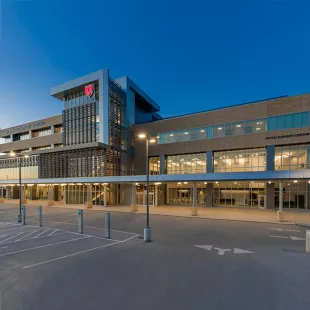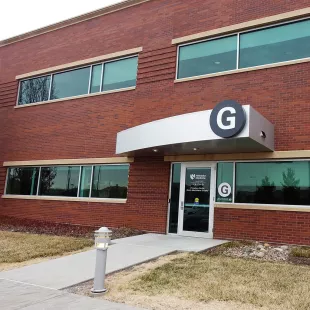Orthognathic, or corrective jaw surgery is performed to treat abnormalities that result in the misalignment of the upper jaw and lower jaw or a combination of both.This misalignment can be caused by deformities that include differential growth of the upper and lower jaws, congenital birth defects or post-traumatic deformities. Failure to correct this misalignment can lead to problems with biting and chewing foods, swallowing, speech and breathing issues such as obstructive sleep apnea. While surgery is performed to correct functional problems, it can also significantly enhance your appearance.
Receive Care from Our Highly Skilled Oral and Maxillofacial Team
At Nebraska Medicine, we have a highly skilled oral and maxillofacial team trained in the most advanced surgical and nonsurgical techniques. We are one of the only centers in the state that can perform a complete range of procedures, no matter what your condition. Our specialists will work with you to develop a care plan and treatment options customized to your needs.
Every surgeon at Oral and Maxillofacial Surgery at Nebraska Medicine is board certified by the American Board of Oral and Maxillofacial Surgery and is involved in the training of future surgeons in their specialty. They are up-to-date on the most current use of anesthesia, medicine and advanced surgical procedural techniques. When you choose Nebraska Medicine, you will be comforted by the wide breadth of knowledge and experience of our oral and maxillofacial surgical team.
Advanced Surgical Techniques
More corrective jaw surgeries are performed at Nebraska Medicine than anywhere else in the state. Our team uses advanced surgical techniques such as distraction osteogenesis, which involves gradual skeletal lengthening for severe deformities. Surgeons also use computer-based virtual planning tools for improved accuracy and surgical outcomes.
Corrective jaw surgery is performed under general anesthesia in the operating room and the patient can expect to stay overnight for observation. The surgical procedure is performed through incisions in the mouth with the rare need for a small incision in the cheek. Cuts are made in the upper and lower jaw bones to separate the tooth bearing segments. The bone segments are then repositioned into their correct placement and stabilized with mini plates and screws.
Almost all cases require combined orthodontic therapy (braces) to align the teeth prior to the jaws being aligned.
Our Locations
-

Oral and Maxillofacial Surgery Clinic at Lauritzen Outpatient Center
4014 Leavenworth St.
Get Directions
Omaha, NE 68105 -

Oral and Maxillofacial Surgery Clinic at Village Pointe Health Center
111 N 175th St.
Get Directions
Omaha, NE 68118
-
Preparing For Oral Maxillofacial Surgery - Before Surgery Guide
Proper preparation prior to Oral or Maxillofacial surgery is important to a successful procedure. Read our pre-operation preparation guidelines.
View More -
After Oral Maxillofacial Surgery - Recovery Guidelines
Preparing for post-op recovery from Oral Maxillofacial surgery is important for patients and caregivers. Learn about recovery with our post-operation guidelines.
View More